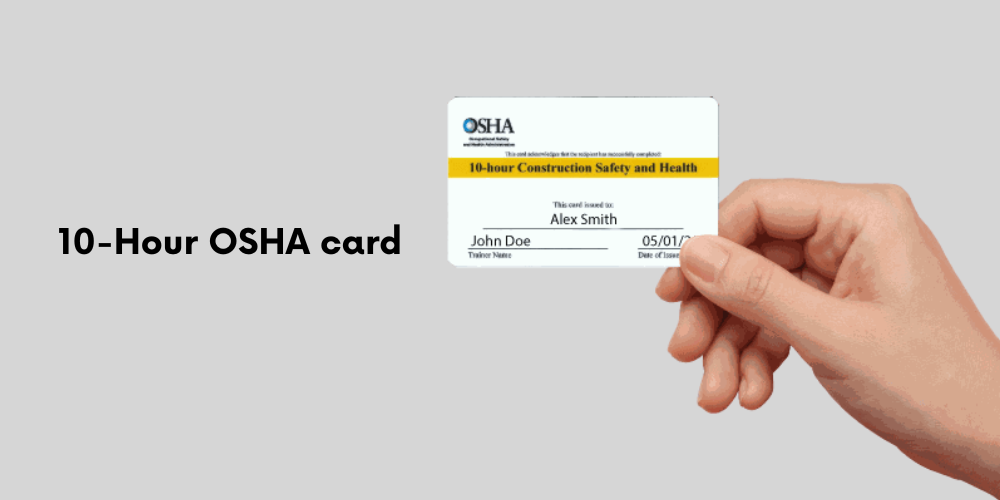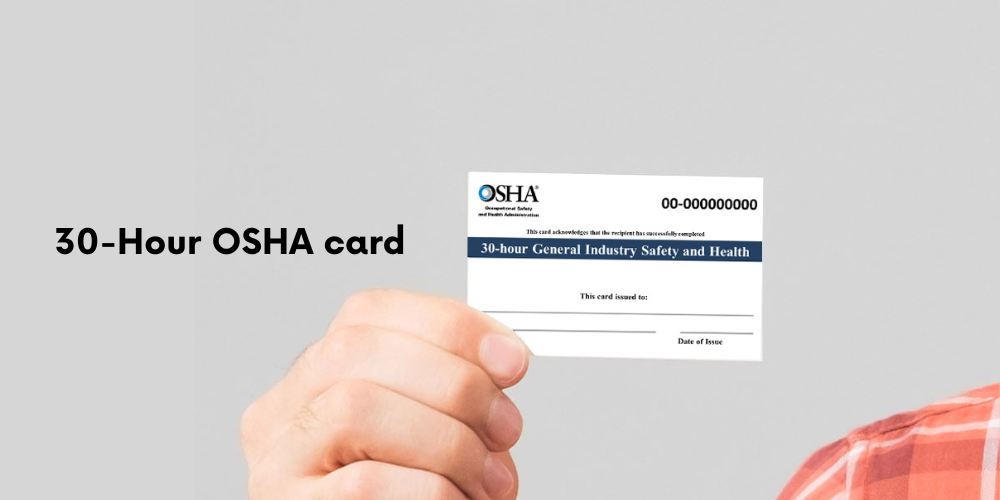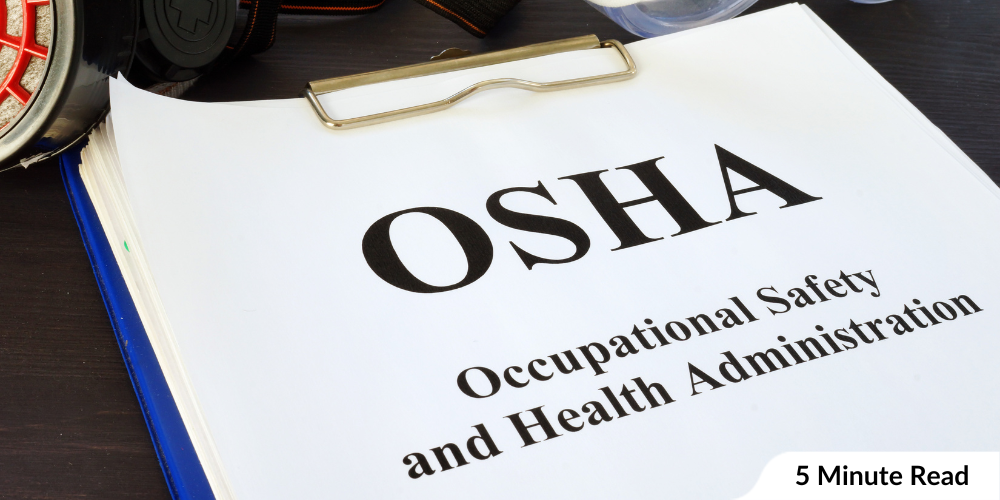Don’t know—
-
What is OSHA?
-
What does it cover?
-
What is its purpose?
-
What training does it provide?
This comprehensive guide covers all the aspects of OSHA.
Let’s jump into it.
What is OSHA?
OSHA is the acronym for the Occupational Safety and Health Administration.
Congress in 1971 laid the foundation for it as part of the occupational safety and health act of 1970.
The Act sets up an alliance program to improve workplace safety.
The agency’s purpose is to “promote, through education and information—
-
the safe and healthful use of man’s powers concerning the work
Furthermore, the federal agency has the responsibility of:
-
enforcing safety requirements on employers;
-
providing training programs for workers on how to avoid accidents
It also works to prevent it—in the United States
-
work-related injuries;
-
fatalities
OSHA does not cover all aspects of workplace safety.
But it offers ways for workers to report safety laws and regulations violations.
Want to know more? Subscribe to Introduccion A OSHA (Course)

What does OSHA cover?
OSHA covers all:
-
Private;
-
State;
-
Local government employees;
-
Federal agencies
It also covers many other types of businesses that may not fall under one of these categories:
-
Construction companies that do not hire over 20 people at a time;
-
Firms with fewer than 100 employees who work onsite in an industrial setting
-
Firms with employees who are primarily engaged in manufacturing
It includes:
-
Small businesses manufacture goods for sale or distribution to consumers for resale.
However, it does not include—any company that provides services such as
-
Cleaning houses;
-
Performing lawn mowing.
What is Occupational Safety and Health Administration purpose?
We already know from above that OSHA is a federal agency that oversees safety in the workplace.
It has a goal of zero injuries and illnesses among its workers.
The agency aims to protect workers from dangerous workplace conditions, including:
-
Exposure to hazardous chemicals;
-
Biological hazards such as bacteria or viruses
What is an OSHA card?
The Department of Labor (DOL) issues a wallet card, commonly called an OSHA card, to anyone who completes OSHA 10-Hour and 30-Hour outreach education and assistance training.

What is OSHA 10-Hour Training?
The OSHA 10-Hour Training course covers the basics of Occupational Safety and Health Act (OSH Act) regulations.
The course provides an overview of:
-
What OSHA standards are?
-
Who do they apply to?
-
How do they protect you?
This training is designed for employees who need to learn the basics of OSHA’s regulations and procedures.
It covers topics such as:
-
Workplace safety
-
Accident prevention
-
Recordkeeping
The course is intended to be completed within 10 hours but can be completed in less time if needed.

Related Training Course: OSHA Recordkeeping & Documentation
What is OSHA 30-Hour Training?
The OSHA 30-Hour Training is an in-depth training on the requirements and responsibilities under the OSH Act.
This training includes:
-
An overview of the various sections within the Act;
-
How they relate to each other;
-
How they apply to your workplace
This training is designed for employees who are already familiar with OSHA regulations and procedures and need further education or practice.
It covers:
-
Workplace safety
-
Accident prevention
-
Recordkeeping
-
Electrical safety
-
Respiratory protection
-
Fall protection
-
Lockout/tag out
-
General knowledge
The course is intended to be completed within 30 hours but may take longer if necessary.

Related Training Course: OSHA Electrical Safety Training; Lockout/Tagout 2022 (Course) | Training Courses | Industrial | Coggno.com LMS
What is the OSHA certification program for?
OSHA’s certificate program supports its mission of preventing workplace illness and injuries.
It trains public and private sector employees to reduce worker incident rates.
Participants can earn certificates for:
-
Construction;
-
Maritime;
-
General Industry training
Participants can choose from various topics such as:
-
Fall hazard awareness
-
Health standards
-
Health management
-
Incident investigation
-
Safety
-
Recordkeeping
All these courses are available nationwide at OSHA Training Institute (OTI) Education Centers.
Related Training Course: OSHA Fall Safety Training 2022 (Course)
What are the consequences of OSHA violations?
OSHA has made strict policies for workplace safety.
And if someone cannot abide by them, they are heavily fined.
Consequences for Employer
Employers must provide safe working conditions to reduce workplace injuries and illnesses.
The conditions must meet or exceed all applicable OSHA criteria and regulations.
If an employer cannot abide by or violates its requirements, they could:
-
be fined by the government;
-
have their business license suspended
SEC. 17. Penalties
If an employer violates OSHA regulations-
-
they can be fined up to $7000for each day that violation occurs (OSH Act).
-
they can also be fined up to $70,000 but not less than $5,000 for each willful violation (OSH Act)
Consequences for Employee
If an employee violates these requirements, they could:
-
be fined;
-
fired
Employee Compensation
If an employee files a complaint with the Secretary of Labor within-
-
one year of their employment ending;
-
after three years after an injury occurred but before filing a complaint to the safety and health department;
they may be eligible for compensation from the Secretary of Labor.
It is besides another monetary award from their employer’s insurance company or self-insured plan (OSH Act).
What are OSHA requirements for employers?
Under, OSHA — employers must maintain a safe workplace environment by ensuring their employees have:
-
Proper training;
-
Equipment;
-
Personal protective gear;
Employers must also provide information about appropriate safety practices and procedures to workers.
It includes filing a complaint and claims against their employer if they get injured in the workplace.
It also requires employers to provide annual training on how to meet those requirements.
What do OSHA standards and regulations include?
OSHA has over 300 standards and regulations for workers in all industries.
These include:
-
29 CFR Part 1910, “Occupational Safety and Health Standards”;
-
29 CFR Part 1926, “General Duty Clause”;
-
29 CFR Part 1910 Subpart G, “Construction Industry Operations”;
-
29 CFR Part 1926 Subpart S, “Construction Projects”;
-
29 CFR 1910.1000 General Duty Clause;
-
29 CFR 1910 Subparts L and M Hazard Communication Standard;
What is the occupational injury & illness data?
The Occupational Injury & Illness Data (OID) Program is a source of information that OSHA uses to:
-
Identify high-risk industries and employers;
-
Determine standards and regulations;
-
Evaluate OID programs
It also collects data on workplace injuries and illnesses
From Federal Agencies—
-
The U.S. Census Bureau
-
Bureau of Labor Statistics (BLS)
-
National Institute for Occupational Safety and Health (NIOSH)
-
Centers for Disease Control & Prevention (CDC) etc.
From State Government Agencies—
-
California Department of Industrial Relations-Cal/OSHA
-
Massachusetts Labor Department-MGLA & Mass/OSHA
From Private Sector Organizations—
-
Accident Prevention Association International Inc.
-
American Society for Safety Engineers Inc.
-
American Society for Healthcare Engineering Inc.
-
Arthritis Foundation International Inc.
From Trade Association—
-
National Council on Compensation Insurance, which represents workers’ compensation companies
-
Universities’ research institutes that study healthcare issues, such as—Columbia University Medical Center or Johns Hopkins School Of Medicine – Baltimore, Maryland
How can a worker report dangerous workplace conditions to OSHA?
If a worker faces a dangerous workplace condition (like exposure to toxic chemicals), they must report it to their:
-
Supervisor and union representative.
They can do it-
-
Using the online complaint form on OSHA’s website;
-
Calling 1-800-321-OSHA (6742).
If someone needs training about safety issues in their workplace, they must inform OSHA.
OSHA will take steps to provide them with the needed training.
What is whistleblower protection?
OSHA has a policy- it will not reveal the identity of a whistleblower who reports a violation.
However, if you feel:
-
An employer’s actions have compromised your safety, and if you wish to speak up about it—you can contact OSHA.
It will:
-
investigate your claim;
-
take corrective action where appropriate (such as offering training).
To whom do OSHA offer training and education assistance?
It offers assistance for:
-
Employers – to arrange safety and health programs for their workers
-
Workers – to report the death or serious physical harm and how to be free from recognized hazards
-
Managers – to abide by the OSHA act and be well aware of the updates.
Training for employers
Coggno has developed an online training course on fall protection.
Add Ladder Safety Training Course and add Ladder Safety Training 2022 (Course) link here.
The course includes 30 minutes of videos the trainee can view anytime on the Internet or download to their computer.
These videos include information- about developing a plan to protect workers from ladder falls.
It is while working in high-risk environments such as construction sites or warehouses.
Training for employees
It also offers a variety of courses designed for workers – who deal with safety issues related to their work environments every day.
The course provides information on:
-
what forms good work practices;
-
how to deal with workplace hazards;
-
whom to contact when something needs fixing around your workplace;
-
how best to handle situations when things go wrong during their duties at work
It applies whether these issues arise more often than not because of bad luck rather than deliberate intent.
Inspection & Compliance Assistance
OSHA has a lot of resources to help you abide by the law.
They can help you find the right training for your workers and managers.
They also have programs that provide:
-
on-the-job education;
-
safety awareness training for supervisors (also called “supervisors’ manuals”).
End Note
OSHA is one of the best organizations that protect workers from dangerous workplace conditions.
However, as an employee, you need to know-
-
what you’re entitled to if you experience on-the-job injury or illness.
Whether a:
-
basic question;
-
something more significant that requires more attention
We hope this guide has helped answer questions about OSHA and what happens when things go wrong.
If you have more questions/concerns about
-
how your company can comply with OSHA;
-
workplace conditions in your area









